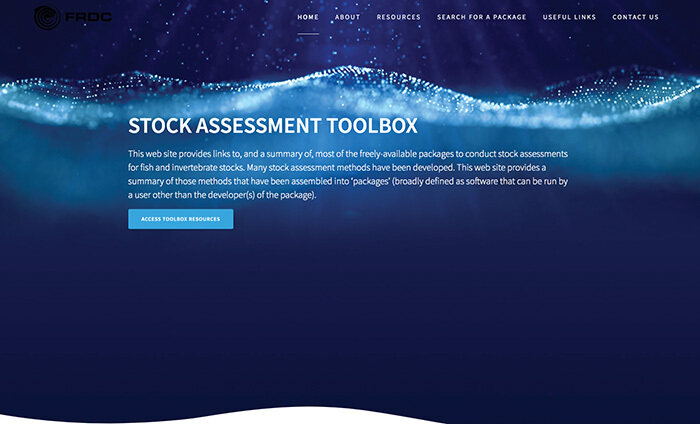Building the skills of the next generation of stock assessment scientists to support informed fisheries management is a priority for FRDC.
Fisheries stock assessment is a relatively niche field – a national database lists only 100 people who work in this area. One is based overseas while others are nearing or past retirement. For many, stock assessment is just one part of a much broader role.
FRDC Senior Research Portfolio Manager Chris Izzo says stock assessments are critical for determining the relative status of fish populations, particularly given the potential impacts of climate change on stocks.
“Australia is losing capacity in this space, and this could potentially reduce the confidence we have in stock assessments,” he says. “Fisheries managers need this information to respond to changes in stocks and to ensure our fisheries remain sustainable.”
Building capacity
To address the skills shortfall, FRDC has funded a project (2021-002) to develop professional opportunities for the next generation of stock assessment scientists and create a community of practice that encourages them to build and retain careers in the fisheries sector.
To fill stock assessment roles, fisheries agencies have attracted people from increasingly diverse backgrounds – from finance, education, mathematics and even astrophysics.
These new recruits are experts in the modelling and statistical analysis required for stock assessment, and they draw on the help of colleagues to understand the nuances of various fish species and behaviours as they learn about what is biologically realistic.
Chris says the current project aims to support home-grown talent, rather than recruiting staff from overseas. Establishing a strong professional network will encourage collaboration and help to bridge knowledge gaps, whether that be for fisheries biologists moving into modelling, or modellers moving into fisheries.
Training opportunities
International stock assessment expert Dr Cathy Dichmont is leading the FRDC project and says providing training opportunities is an important part of both skill development and networking.
“When a fisheries agency runs stock assessment modelling courses, we’re encouraging them to open the courses to others outside their own agency. Western Australia did this recently for a course on an international stock synthesis model.
“Through the project, we’ve also run two courses on a data-limited version of the Stock Synthesis assessment platform, led by international expert Dr Jason Cope. The demand for the course was massive and the feedback has been positive,” she says.
These two modelling packages are among the 77 listed in the FRDC’s recently updated stock assessment toolbox. The toolbox was created as part of a previous project (2018-148) to link stock assessment scientists with the most widely available and well-supported Australian and international modelling packages.

Pictured: FRDC's Stock Assessment Toolbox homepage (https://toolbox.frdc.com.au)
Cathy says while bespoke assessment approaches have their place, learning to use widely available packages can help to develop standardised stock assessments more quickly. It also allows others who can use the same approach to share insights to improve modelling outcomes.
As a result of connections made through the workshops, colleague Professor André Punt and Cathy organised a stock assessment game – creating the Pandoran Mystery Fish and challenging participants to conduct a stock assessment based on the information provided.
“Almost every fisheries jurisdiction came back with an entry, which was great, and also surprising, because they did this in their spare time. All the participants ran their models extremely well.”
Managing uncertainty
Cathy says no one came up with the “absolutely correct” assessment for the imaginary fish stock, although the team from the Northern Territory came closest. The game highlighted one of the key vulnerabilities of stock assessments – the accuracy of the information used. In the case of the Pandoran Mystery Fish, key mortality data was deliberately incorrect, which led to errors in the assessment results.
Real life is not as clear cut as an imagined scenario, and the fish biology data currently in use for actual stock assessments can be decades old, often generated with outdated technologies, or collected using different methods across fisheries jurisdictions.
“That’s one reason why FRDC and other agencies are investing to update the biological information for a host of species,” says Cathy. “We can no longer assume that data we’ve taken as being stable from year to year still remains so.”
She highlights the value of collaboration between individual scientists and among agencies in addressing the uncertainty in data, with an increase in collegiate approaches because of the training workshops.
“People taking part have found it’s better to have a team to draw on when you’re stuck, or to seek advice on the many decisions you need to make when you do an assessment. Now they’ve met other people face to face at the workshops, and from different jurisdictions, it has created more confidence in reaching out if they do have questions.”
All of which, she says, leads to a growing group of professionals who feel supported in the fisheries stock assessment community, providing better stock assessments for responsive fisheries management.
Related FRDC Projects





